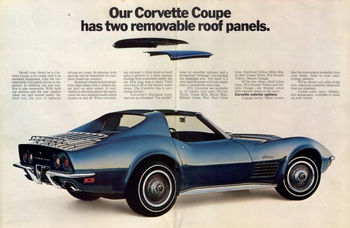The C3 Buyers Guide - Part 2 of 7
This is article two in a series of seven.
They say an icon perfectly mirrors its time in pop culture and the C3 Corvette did just that. Over its 14 year production run, it reflected the best and worst of the automobile industry. From fire breathing early models, to the emission-controlled, luxury GTs they transformed into near the end of their production run, the Corvette exactly reflected the tenor of the times while surviving bean counters, stringent governmental regulations, and foreign competition.

In retrospect, the C3's production run went too long, and by 1982, it was obsolete by modern car standards. This factor, more than anything has been detrimental to the legacy of the C3. If the model run had only been half as long, and replaced by a new model in the mid-'70s, the suddenly long in tooth Shark (even by 1970's standards) would have been spared the embarrassment of aging badly. Commensurately, these later year C3's have become the brunt of jokes from detractors and other Corvette skeptics.

Hindsight has the uncanny ability to clarify perception and now the lowly C3, especially later rubber bumper models, emerge as the last of the Golden Era of Bill Mitchell design and really lend themselves to the resto-rod movement. For example, a 1975 Corvette is old enough to be smog exempt and with a crate motor and suspension upgrades, is an awesome DIY project. C3's are also a great way to enter the Corvette hobby. We love all versions of the C3, and for a lot 'Vette enthusiasts, it's the pinnacle of Corvette cool. A brief overview of this most-produced Corvette generation is daunting, so we have broken it down to four sections, 1968-1972, 1973-1977, 1978-1979, 1980-1982. While all models utilized the carried over the independent rear suspension chassis and disc brakes from the C2. Every Shark shares doors, windshields and T-tops. Where they differ is front and rear end styling tweaks, roof design, fender vent design, and chrome or rubber bumpers. Let's not forget the performance factor, either. From a 427 CI V8 in 1968 to a 305 CI weezer motor in 1980, the C3 has seen every possible combination of Chevy power.
Source: Corvette Online - By Dave Cruikshank